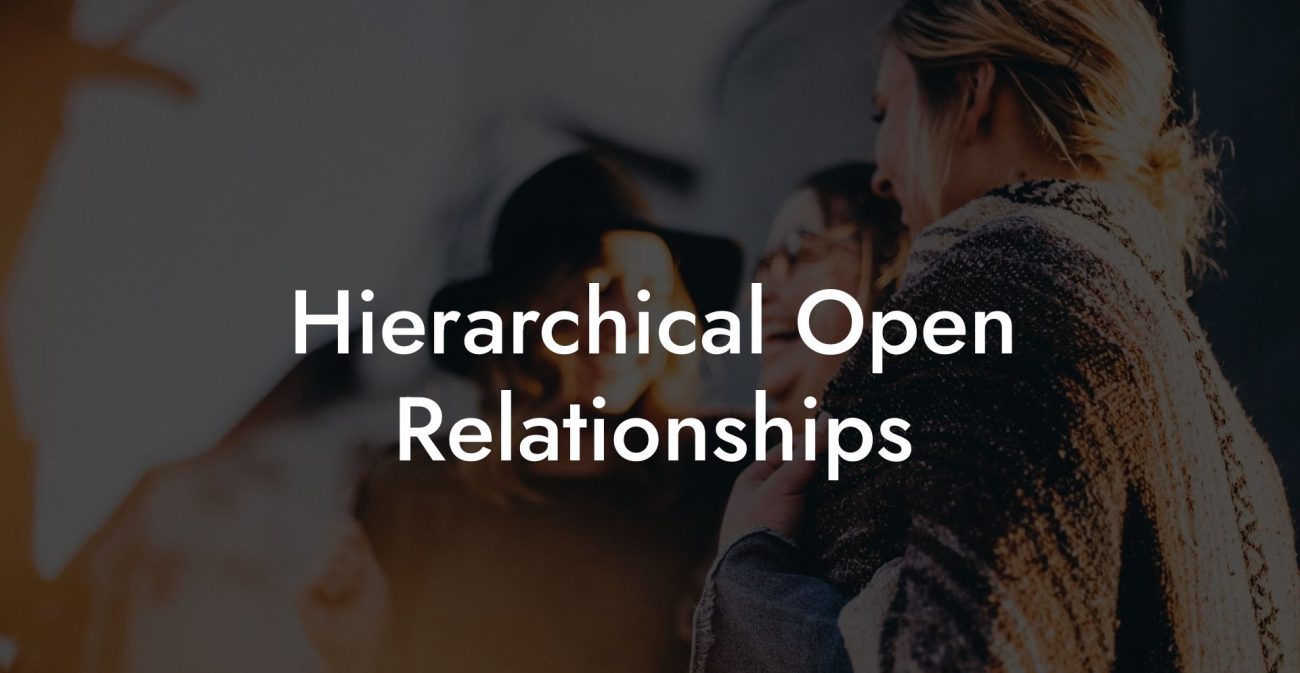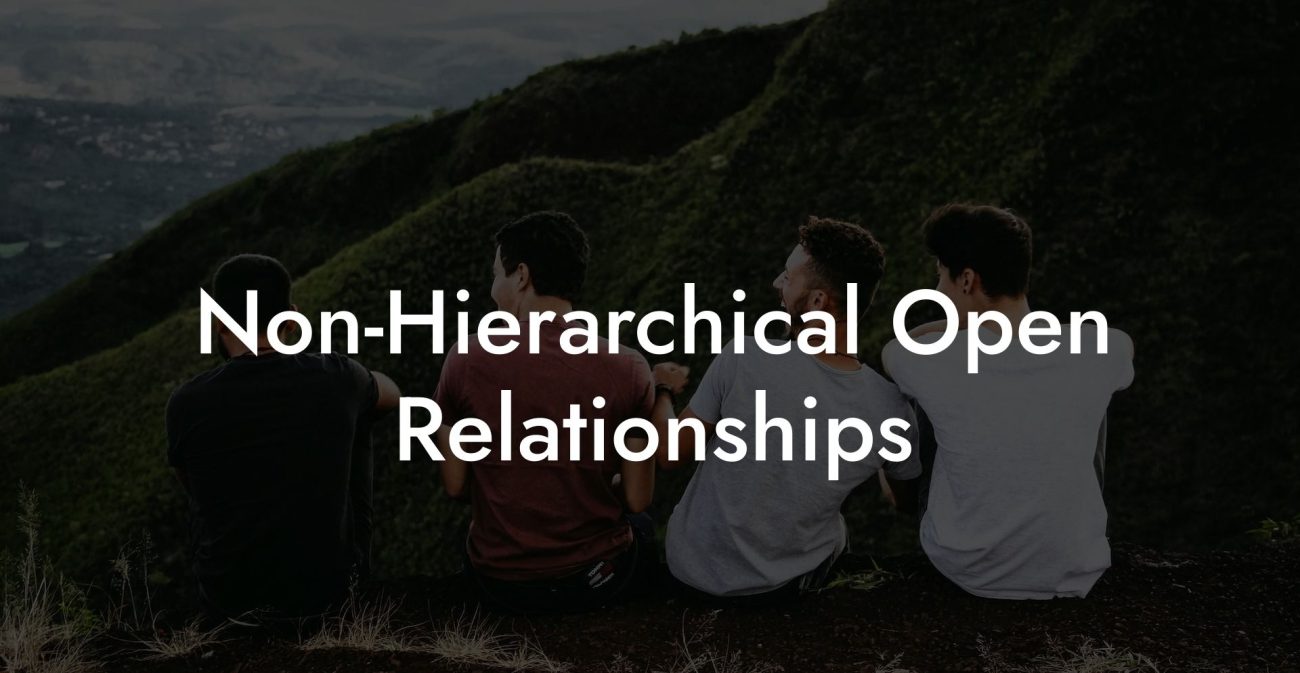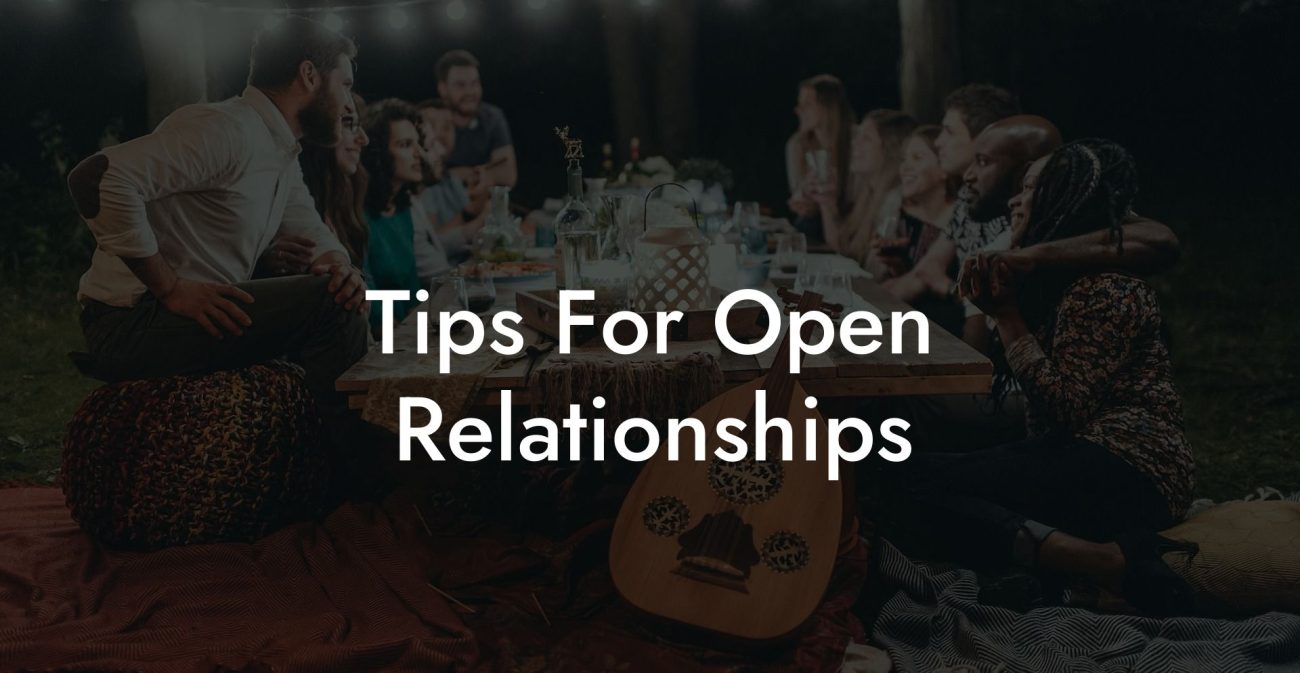Guide to Poly Lifestyle

Welcome, free spirits and lovers of diverse connections! If you’re curious about embracing a lifestyle that celebrates open hearts, multiple connections, and the freedom to love authentically, then you’ve come to the right place. This guide to the poly lifestyle is your comprehensive roadmap for understanding what it means to live polyamorously—balancing ethics, communication, and personal growth while building a network of meaningful relationships.
Have you ever wondered if monogamy is just a stupid little experiment? Open relationships, polyamory, relationship anarchy...find out which relationship dynamic suits you best with our one minute relationship test. See if you are just conforming to "societal norms". Reveal your truth >>
Quick Links to Useful Sections
- Understanding the Poly Lifestyle
- What Is the Poly Lifestyle?
- The Philosophy Behind Polyamory
- Benefits of Embracing the Poly Lifestyle
- Diverse Emotional Fulfillment
- Personal Growth and Self-Discovery
- Enhanced Communication Skills
- Challenges of the Poly Lifestyle
- Managing Jealousy and Insecurity
- Time and Energy Management
- Navigating Social Stigma
- Practical Tips for Navigating the Poly Lifestyle
- 1. Prioritize Honest Communication
- 2. Set Clear and Flexible Boundaries
- 3. Use Digital Tools to Stay Organized
- 4. Invest in Self-Care
- 5. Connect with a Supportive Community
- Self-Reflection: Is the Poly Lifestyle Right for You?
- Questions to Ask Yourself
- FAQ: Your Poly Lifestyle Questions Answered
Understanding the Poly Lifestyle
What Is the Poly Lifestyle?
The poly lifestyle encompasses the ways in which individuals and couples engage in consensual non-monogamous relationships. It’s not just about having multiple partners; it’s a philosophy that values open communication, mutual consent, and the belief that love can be abundant. Whether you maintain multiple romantic relationships, create a network of supportive friendships, or explore both, the poly lifestyle is all about living authentically and embracing the full spectrum of human connection.
The Philosophy Behind Polyamory
At its core, the poly lifestyle is rooted in the idea that love isn’t a limited resource. It champions the values of free consent, transparency, and emotional autonomy. Rather than adhering to traditional relationship models that emphasize exclusivity, polyamory encourages you to explore connections that enrich your life and foster personal growth. This philosophy invites you to question societal norms, redefine intimacy, and build relationships on your own terms.
Benefits of Embracing the Poly Lifestyle
Diverse Emotional Fulfillment
One of the most celebrated aspects of the poly lifestyle is the ability to draw on different partners for various kinds of support and intimacy. Each relationship can offer unique perspectives and strengths, creating a rich tapestry of emotional fulfillment.
Personal Growth and Self-Discovery
Navigating multiple relationships encourages deep self-reflection and personal development. Through open dialogue and boundary-setting, you learn more about your desires, limits, and what truly makes you happy. This journey of self-discovery can enhance your overall emotional intelligence and resilience.
Enhanced Communication Skills
Maintaining several connections requires honest and ongoing communication. Regular check-ins, active listening, and clear expression of needs are essential practices in the poly lifestyle that can improve all areas of your life.
Challenges of the Poly Lifestyle
Managing Jealousy and Insecurity
Even in the most open and honest relationships, feelings of jealousy or insecurity can arise. The key to overcoming these challenges is to address them head-on with honest conversation, self-reflection, and sometimes professional guidance.
Time and Energy Management
Balancing multiple relationships can be demanding. Effective scheduling, clear boundaries, and prioritizing self-care are essential to ensure that all connections are nurtured without feeling overwhelmed.
Navigating Social Stigma
Despite growing acceptance, polyamory can still face societal misunderstandings and judgment. Building a supportive network of like-minded individuals is crucial to help you stay confident and resilient in your lifestyle choice.
Practical Tips for Navigating the Poly Lifestyle
1. Prioritize Honest Communication
Open dialogue is the foundation of any successful poly relationship. Make time for regular check-ins with your partners to discuss your feelings, renegotiate boundaries, and celebrate successes together.
2. Set Clear and Flexible Boundaries
Establish what you are comfortable with regarding time, emotional investment, and physical intimacy. Remember that boundaries aren’t static; revisit and adjust them as your relationships and needs evolve.
3. Use Digital Tools to Stay Organized
Leverage shared calendars, scheduling apps, and relationship management tools like Notion or Trello to keep track of your commitments. This helps ensure that everyone’s needs are met without overwhelming your schedule.
4. Invest in Self-Care
With multiple relationships, it’s essential to take time for yourself. Prioritize activities that recharge you—whether that’s meditation, exercise, or pursuing hobbies—so you can be fully present in your connections.
5. Connect with a Supportive Community
Engage with online forums, local meet-ups, or social media groups dedicated to polyamory. Sharing experiences and advice with others can provide invaluable support and insight.
Self-Reflection: Is the Poly Lifestyle Right for You?
Questions to Ask Yourself
- What are my relationship priorities? Do I thrive on deep, diverse connections, or do I prefer singular, focused intimacy?
- How do I handle jealousy? Am I comfortable addressing and managing complex emotions through open dialogue?
- Do I have the time and energy? Can I balance multiple relationships without compromising my personal well-being?
- How important is communication? Am I willing to invest in the ongoing conversations that polyamory demands?
- What does my ideal relationship look like? Consider whether a flexible network of connections aligns with your vision for the future.
Honest answers to these questions can help you determine if the poly lifestyle resonates with your values and needs.
FAQ: Your Poly Lifestyle Questions Answered
1. What exactly is the poly lifestyle?
The poly lifestyle involves engaging in multiple consensual, non-monogamous relationships simultaneously, built on open communication and mutual respect.
2. How is polyamory different from casual dating?
Polyamory focuses on building ongoing, meaningful connections with multiple partners, whereas casual dating is typically more transient and may lack deep emotional involvement.
3. Do I have to have a primary partner?
Not necessarily. While some people designate a primary partner, others prefer to keep all connections on an equal footing. The choice is entirely personal.
4. How can I manage jealousy in a poly dynamic?
Address jealousy through honest conversations, self-reflection, and regular check-ins with your partners. Seeking support from a therapist or peer group can also be helpful.
5. Is it difficult to balance multiple relationships?
Balancing multiple relationships can be challenging and requires effective time management, clear boundaries, and strong communication skills.
6. Can polyamory lead to personal growth?
Yes, many individuals report increased self-awareness, improved communication skills, and personal growth as they navigate the complexities of polyamorous relationships.
7. How important is community support?
Extremely important. Engaging with like-minded communities can provide valuable insights, emotional support, and a sense of belonging.
8. How do I know if the poly lifestyle is right for me?
Reflect on your values, relationship priorities, and how you handle emotions. If you thrive on diverse connections and open communication, the poly lifestyle might be a good fit.
9. What if my feelings change over time?
It’s normal for your relationship preferences to evolve. Regular self-reflection and open dialogue with your partners can help you navigate these changes.
10. Where can I find more information about the poly lifestyle?
Explore books like "The Ethical Slut" and "More Than Two", listen to podcasts such as “Multiamory,” and join online communities on Reddit and Facebook dedicated to polyamory.
Resources and Community Support: Your Next Steps in the Poly Lifestyle
- "The Ethical Slut" by Dossie Easton & Janet Hardy – A seminal work on non-monogamous relationships.
- "More Than Two" by Franklin Veaux & Eve Rickert – Offers practical advice and insights into managing multiple relationships.
- Podcasts: "Multiamory" and similar shows provide expert advice and personal stories on the poly lifestyle.
- Online Communities: Join forums like r/polyamory or dedicated Facebook groups to connect with others and share experiences.
Additionally, consider seeking guidance from a therapist or relationship coach experienced in non-traditional relationships. With clear communication, self-reflection, and the right support network, you can confidently embrace the poly lifestyle and build connections that are both meaningful and authentic.
Lost & confused by all of the terms, types and seemingly made up 3 letter acronyms?? We've got you. Check out our Ethnical Non-Monogamy Dictionary >>
Useful Interruption: Not sure which relationship vibe fits you best? Take our Relationship Test, it’ll give you the real insight into your natural relationship style. Then, dive into our binge-worthy guides (from the tried-and-true to the “wait, that’s a thing?”) and find the perfect relationship type for your life:
- Monogamy
- Open Relationships
- Ethical Non-Monogamy
- Solo Polyamory
- Non-Hierarchical Polyamory
- Hierarchical Polyamory
- Relationship Anarchy
- Swinging
Now back to the main article but yeah take the test...












